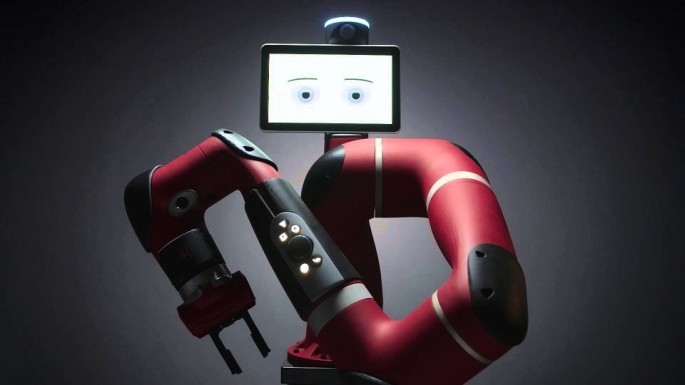Meet Sawyer. The robot built by Rethink Robotics is the newest human-friendly manufacturing robot that can complete detailed tasks such as building electronic components. Sawyer's design resembles a 7-joint human arm with a tablet "wrist," and can do tasks that are unreasonable for traditional robots or humans.
Manufacturers could use Sawyer for several functions, such as handling hazardous materials and testing circuit boards. Sawyer's function resembles a human arm's operation, except that it can bend and turn on seven joints, extending to over 40 inches. It has an appendage that resembles a tablet "face," and weighs 42 pounds minus its pedestal. The robot can be charged through a normal electric outlet like other devices.
Sawyer is actually a 2.0 version of Baxter, Rethink Robotics' previous robot. The company's website explains that Baxter and Sawyer are similar in their software platform, signature "face" screen, and revolutionary user interface.
Sawyer also sports a Cognex camera and built-in light source in its "wrist." This allows the robot's users to see the machine's operation. Another tablet-like camera is located in its "head."
Each joint of Sawyer's "arm" equips high-resolution sensors, which allow it to "feel" around various materials. Operators can also teach Sawyer how to perform various tasks by holding its hand and then demonstrating the task.
The robot will likely be particularly in-demand in Asia. Labor costs have been rising there 15 to 20 percent yearly, with factories experiencing turnover rates up to one-fourth of their workforce.
Jim Lawton, Chief marketing officer of Rethink Robotics explains that Baxter has performed certain tasks well, such as packing boxes and removing items from an assembly line. But customers required a robot that does "other kinds of tasks," according to Tech Times.
Sawyer will be on sale commercially sometime in 2015 with a price tag of $29,000, according to Time. After operating for approximately 30,000 robot-hours, the robot must be replaced.



























